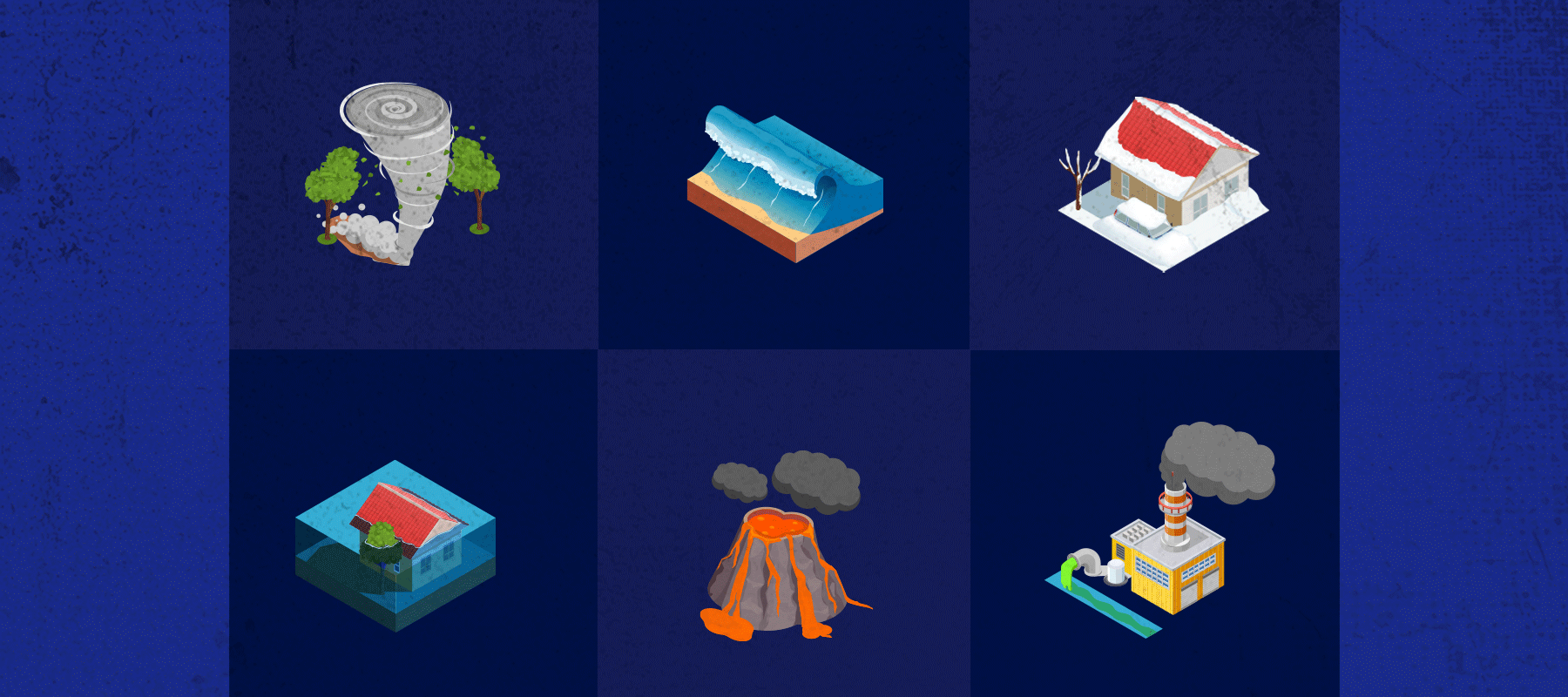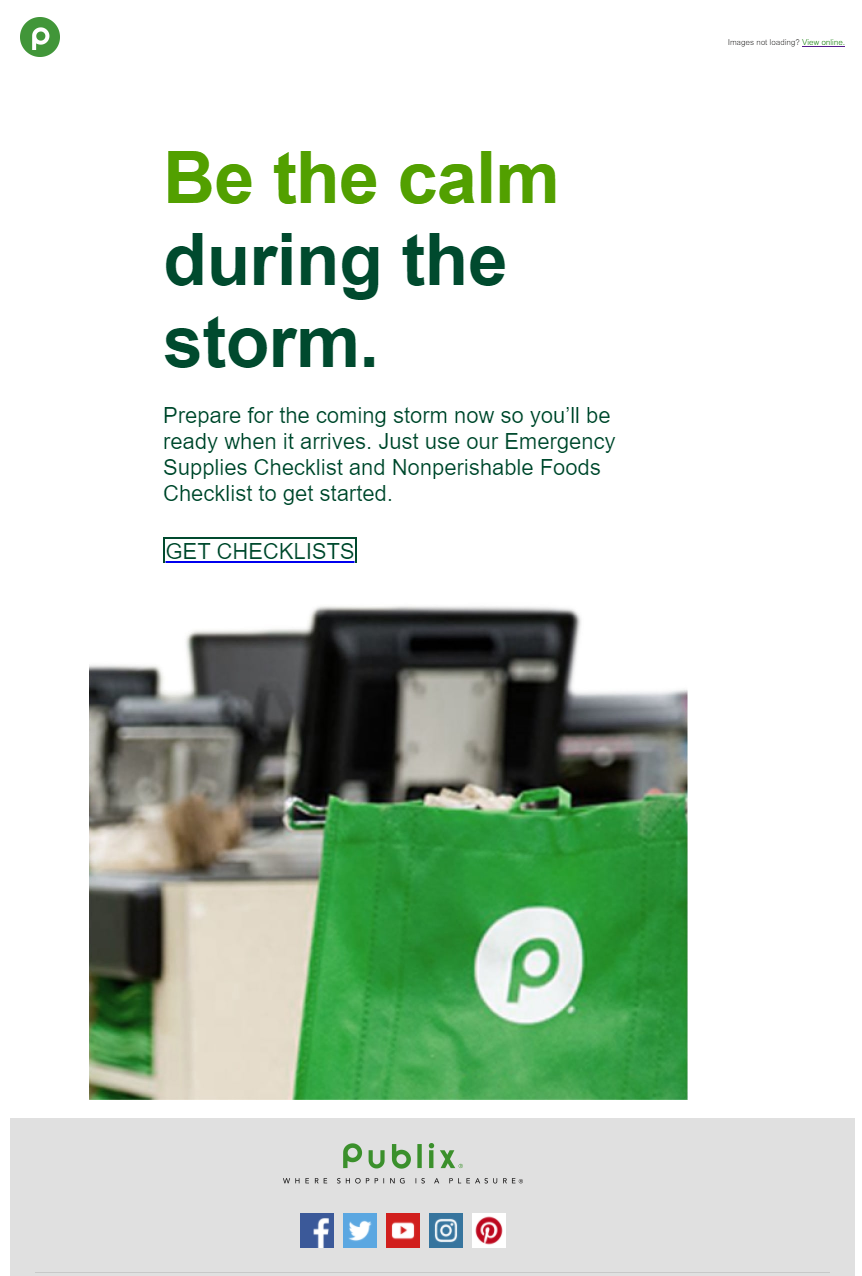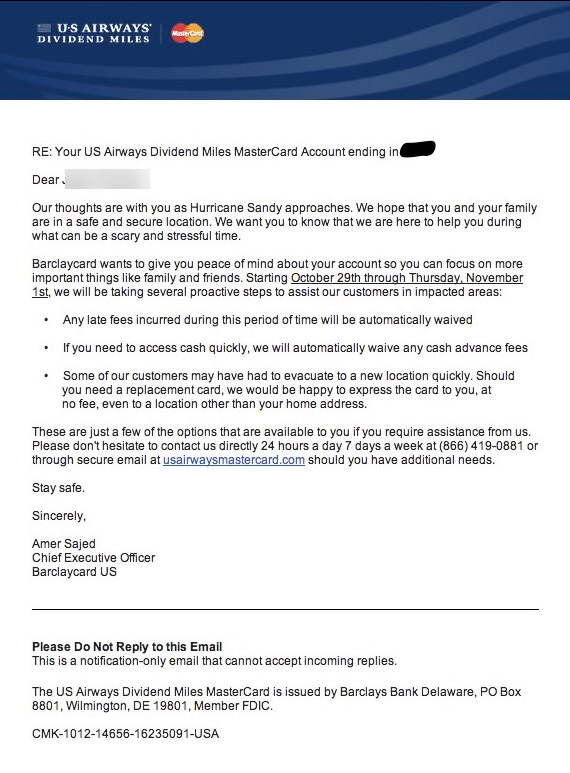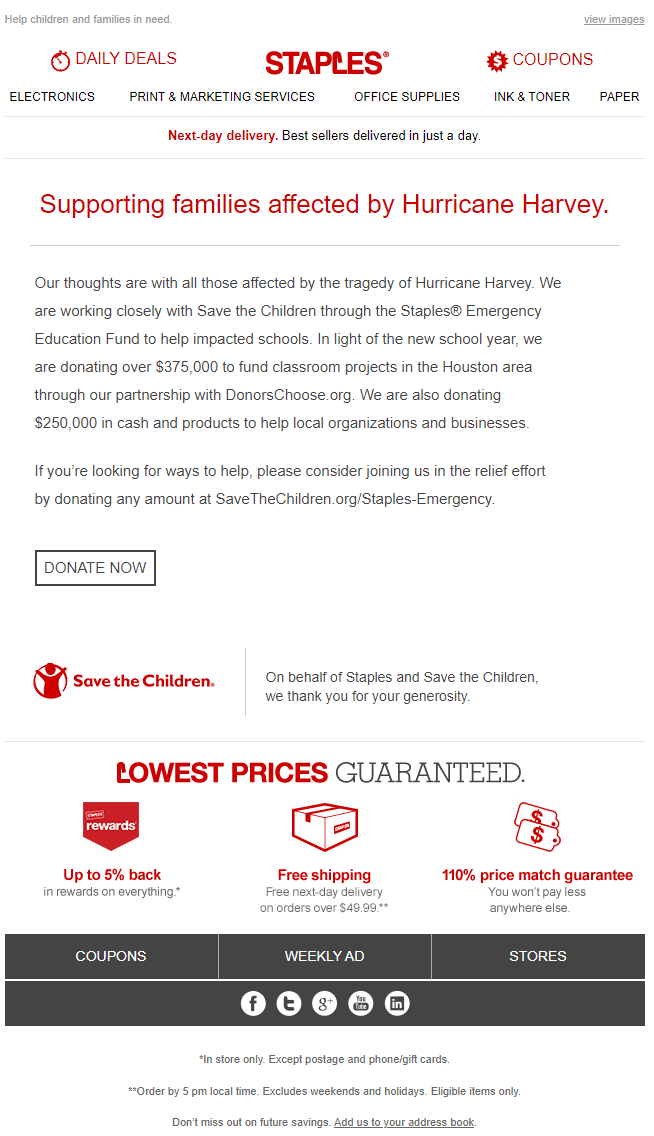
Natural disasters aren’t going anywhere any time soon – and unfortunately, it seems like the frequency in unprecedented natural disasters has increased in recent years. While you cannot control the severity or frequency of natural disasters, you can control how you handle your communication with consumers. You might be asking yourself, what does this have to do with email? The answer is: a lot more than you think.
With email becoming one of the top channels to engage with consumers, competition within the inbox is increasing. However, connecting with your subscribers on a human level is crucial to building the trust and authenticity that drives long-term relationships and establishes brand loyalty. Part of recognizing your consumers as humans is curating content that resonates with them and sending the right message at the right time. This is especially true when it comes to communicating with consumers who have been affected by natural disasters.
So, what changes can you make to your email program to better communicate with those experiencing hardships due to a natural disaster? Here are some tips:
1. Adjust your email program accordingly.
If you are a promotion-heavy sender and your products or services aren’t immediately needed during the natural disaster, consider pausing the promotions for a week – or even a couple of weeks – while the consumer tries to recover from the natural disaster.
2. Don’t forget about automated emails!
Automated emails are great because they require low maintenance once implemented. However, they are also pretty easy to forget about. While you are going through and adjusting your email program for a particular location or region, don’t forget to adjust your automated emails, too!
3. Send a separate email to consumers affected by the natural disaster.
Let them know you are thinking of them and hoping they are safe. Within the email, be empathetic of the situation and what your consumers are experiencing. During these difficult times, many are struggling financially and emotionally. Be sure to use your email to demonstrate awareness of the struggles people may be going through. Also, note that this is not the time to make light of the situation.
4. Provide critical information.
If your company is providing relief or adjusting any policies to accommodate hardships felt during this time, email is a great way to communicate any updates or changes.
5. Be helpful.
If you can provide any helpful resources, tips, or information, sending an email with the necessary information will help build that authentic relationship between you and your consumers.
6. If this event will impact orders or shipping, optimize your pre-header text to let people know.
This tip applies to anyone that might be affected, not just those in a particular region where the disaster occurred. Letting consumers know right away if their orders might be delayed is a great way to set expectations up front to avoid disgruntled customers down the line. Alerting consumers of the situation can be as simple as adding the notification within the pre-header text of the confirmation email.
Now that we know what to look for, here are some examples of brands that sent well-executed emails during natural disasters:
Publix
What we love:
- Relevant and timely geo-targeting. Publix sent this geo-targeted email a couple of days before a storm was forecasted to hit to give people enough time to get prep supplies ahead of those storms.
- Value added. Publix is not selling anything within this email! Instead, they offer links to the supplies checklists, which are a valuable resource for their shoppers. People will certainly buy from those checklists, but it’s not the focus of Publix’s message.
- User experience. Once the subscriber clicks through, they are taken to a page that is just as impressive as the email. Not only does the landing page provide a seamless transition from the email, but it also includes:
- A link to check the status of local Publix stores that may be closed due to the storm
- Various supplies checklists
- Store locator
- Link to refill prescriptions (a critical reminder for many who may need access to medicine during the storms)
- Links to the American Red Cross, Fema.gov, and other relief websites
U.S. Airways | MasterCard
What we love:
- Empathetic tone. The email immediately starts with U.S. Airways offering their acknowledgment and sympathy for their cardholders who are facing hardships due to Hurricane Sandy.
- List of services provided. Given the situation of many cardholders, U.S. Airways lists a few of the ways they provide relief so that these people can focus on the more essential things.
- Creative aligns with the email’s sentiment. The tone of the email is very solemn and uses an all-text letter format signed by the CEO. Using this type of format shows that U.S. Airways acknowledges the severity of the issue and the devastation brought on by the hurricane.
Staples
What we love:
- Highlights relief efforts. Staples is donating and providing assistance to those impacted and is sure to highlight these efforts. This is a great way to encourage consumers to participate and donate to various organizations partnered with their brand.
- Excludes promotions. Staples refrains from including any promotional content within the email to keep the purpose of the message clear. This also helps support the authenticity of their efforts in helping communities affected by the disaster.
It’s important to remember that even once your targeted audience has been selected, an email has been created using the tips and examples mentioned above, and you are ready to hit send, this is just half the work. Be sure to monitor subscriber engagement metrics like opens, clicks, complaints, and unsubscribes, sender reputation metrics like spam traps and unknown users, and inbox placement metrics. Validity’s Everest platform is here to help ensure this campaign is successful and the relationship between the brand and the consumer strengthens – even during the darkest days.


